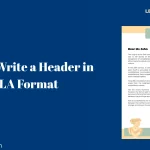Have you ever read a story that is both shorter than a novel and longer than a short story? I bet that’s a novella! However, what precisely is a novella? For both readers and writers, an understanding of this distinctive literary form can lead to new opportunities. Now let’s get started and examine novellas in detail.
You may also like: The 7 Best Fantasy Book Series of All Time
The Structure of a Novella
The structure of a novella typically includes a clear beginning, middle, and end, similar to a novel but more concise. It focuses on a central conflict and develops characters more deeply than a short story.
Unlike longer novels, novellas avoid subplots, maintaining a tight, fast-paced narrative. This compact structure allows for a more intense and focused exploration of the story’s themes and characters, making novellas a unique and engaging form of storytelling.
Basic Structure
A novella usually has a basic framework that is more condensed than that of longer books. It has three parts: an opening that introduces the story and its characters, a middle section that advances the storyline and heightens the suspense, and a finale that settles the dispute.
A novella’s small length—typically 20,000–50,000 words—allows it to keep a focused narrative, frequently with just one major storyline rather than the multiple subplots that lengthier works tend to include.
You may also like: Literary Elements: A Complete List of Powerful Literary Devices
Comparison with Novel and Short Story
In terms of length and content, a novella is different from both a novel and a short story. A novel delivers a more intricate and thorough narrative than a short story, which is condensed and concentrates on a single event or character.
On the other hand, a novella finds a balance between having a tighter, more focused plot than a novel and offering more depth than a short story. A novella’s distinct format makes it possible to explore themes and characters in a condensed but impactful manner.
You may also read: Fatal flaw: Definition, Types, Examples and More
Key Components
A novella’s key components include a focused plot, well-developed characters, and a central theme. Unlike a novel, a novella maintains a brisk pace with fewer subplots and concise storytelling. Its length, typically between 20,000 and 50,000 words, allows for depth without the complexity of a full-length novel.
You may also like: Top 10 Best Vampire Books of All Time
Length of a Novella
Word Count Range
A novella is longer than a short tale but shorter than a novel, usually having between 20,000 and 50,000 words. Compared to shorter works, this word count enables more intricate story development and in-depth character study.
Because of its short length, the novella is perfect for readers looking for a quick yet engaging read. It provides a compelling story without the time commitment of a full-length novel.
Differences from Other Literary Forms
It’s critical to comprehend how novellas vary from other literary forms while determining their duration. A novella is longer than a short tale but less than a novel, usually falling between 20,000 and 50,000 words.
Novellas have a more intricate plot and greater character development than short works. Nonetheless, they concentrate on a single story arc and are shorter than novels. Novellas’ special length enables them to delve deeper into topics without the commitment of a full-length book.
You may also read: What is an Anti-Hero? Traits, Motivations, & Famous Authors
Key Elements of a Novella
Plot
A novella’s plot is crucial to maintaining readers’ interest. Novellas, as opposed to novels, concentrate on a single, succinct plot with few supporting characters.
Because of its condensed style, the novella is able to keep up a fast pace and rapidly grab readers. A novella’s plot typically revolves around a single central conflict or theme, with fewer characters and an uncomplicated narrative style, offering a rich and engaging reading experience in a condensed amount of time.
Characters
Characters are essential to a novella’s plot because of its condensed format. Novellas, as opposed to longer books, usually have a smaller cast, which enables each character to get concentrated development and make a major contribution to the plot.
These characters are frequently given much attention, and the development of the plot depends heavily on their motivations and conflicts.
Novellas can explore the nuances and relationships of a small number of people in more detail by focusing on them, which results in a deep and engaging reading experience that prioritizes depth over breadth.
Settings
The setting of a novella greatly influences the mood and ideas of the story. Novellas, as opposed to longer books, frequently concentrate on a particular, closely knit setting that heightens the impact of the story.
This location becomes more than just a background; it becomes essential to the experiences of the characters and the progression of the story.
Authors can heighten the emotional and thematic impact of a novella by immersing readers in a compact yet richly detailed universe through careful setting selection and vivid description.
You may also read: Literary Fiction vs Genre Fiction: Definition & Examples
Theme
In a novella, the theme is a central element that drives the narrative’s meaning and resonance. Unlike longer novels, novellas focus sharply on a single theme or idea, exploring it with depth and intensity.
This concentrated exploration allows novellas to deliver powerful emotional and intellectual impacts within a shorter length. Themes in novellas often tackle complex human experiences such as love, loss, identity, or societal conflict, offering readers a profound and concentrated literary experience. Understanding the theme helps readers grasp the novella’s purpose and underlying message effectively.
Conflict
Conflict is essential to moving the plot of a novella forward. Usually, the main characters have to overcome difficulties or roadblocks in order for the narrative to progress towards its conclusion.
These conflicts can be external, like conflicts with other characters or pressures from society, or internal, like personal problems or emotional quandaries.
Writers can craft a captivating and tightly focused plot that captivates readers from beginning to end by escalating these tensions within the condensed length of a novella. This ensures that every plot twist and conclusion is essential to the overall impact of the tale.
Resolution
In a novella, the resolution is a crucial element that wraps up the story’s main conflicts and provides closure to the characters and plot.
Unlike longer novels, novellas typically have a concise resolution that resolves the central tension or dilemma. This resolution often leaves room for interpretation or reflection, fitting the shorter length of a novella.
It aims to satisfy readers by resolving key plot points while maintaining the narrative’s brevity and impact, distinguishing it from longer literary forms like novels or short stories.
You may also like: What is Line Editing and How can it Help in Your Writing
Why Write a Novella?
Advantages for Writers
Authors can benefit from writing novellas in a number of ways. First of all, because it is shorter than a novel, it can be finished more quickly, which makes it perfect for writers who are pressed for time or who want to experiment with new ideas without committing to a longer work.
Novellas give readers a pleasant narrative experience in a condensed format while simultaneously affording a focused platform for the in-depth development of characters and ideas.
Furthermore, novellas can be a good starting point for authors looking to find their creative identity in the cutthroat world of publishing and frequently draw in specialized audiences.
Popularity in Publishing
Novellas are becoming more and more popular in publication because of their concentrated storytelling and short length. Novellas are frequently valued by readers for their capacity to provide a full narrative experience in less time than novels.
Novellas are intriguing to writers because they provide for the clear and in-depth exploration of condensed subjects, which makes them perfect for trying out new genres or approaches.
Novellas combine the depth of a novel with the conciseness of a short tale to satisfy readers seeking absorbing stories that are suitable for reading in one sitting in today’s hectic world.
You may also read: Best Udemy Courses for Self-Published Authors
You may also like: 150+ Positive Words That Start with O to Brighten Your Vocabulary
Famous Examples of Novellas
Classic Novellas
Some classic novellas include “Animal Farm” by George Orwell and “The Metamorphosis” by Franz Kafka. These works have stood the test of time and continue to be studied and enjoyed.
Modern Novellas
Modern novellas, such as “Breakfast at Tiffany’s” by Truman Capote and “The Ocean at the End of the Lane” by Neil Gaiman, showcase the versatility and enduring appeal of this literary form.
You may also like: How to Start a Novel: A Step By Step Guide
How to Write a Novella
Idea Generation
The process of coming up with ideas is vital when composing novellas. Begin by delving into ideas or themes that intrigue you perhaps an original location or an engaging character conflict.
Generating captivating story ideas can also come from looking at one’s own experiences or current affairs. To create complexity, think about experimenting with different narrative structures or merging genres.
A strong novella premise might come from brainstorming meetings, taking notes, and letting ideas develop naturally.
Planning and Outlining
Planning and outlining are crucial stages in writing a novella because they guarantee a cogent story in a condensed amount of space. Start by summarizing the main plotline and important incidents, emphasizing clear narrative and character development.
This procedure keeps the plot from being too big or complicated while maintaining a clear structure. Early planning also helps authors better control the novella’s length, which is usually longer than a short story but shorter than a novel, making sure each scene and detail adds to the story’s impact and depth.
Writing Process
It’s essential to comprehend the writing process before starting a novella project. A novella is usually between 20,000 and 40,000 words length, longer than a short story but shorter than a novel.
Because of its short length, the writing process requires careful consideration of the characters, plot, and themes. Writers usually concentrate on conveying stories succinctly, allowing characters to grow quickly while preserving a compelling storyline.
This strategy guarantees that every word makes a substantial contribution to the novella’s overall impact, making every component essential to its success and organization.
Editing and Revising
Editing and reworking your work are essential steps in honing your novella. Editing entails going over your book to make sure the characters and plot are consistent, clear, and coherent.
It’s about honing your writing such that each word has a function and improves the narrative’s flow. Deeper editing is done during revision, with an emphasis on pacing and structure to keep the novella’s concise but powerful format.
These procedures assist you polish your novella so that readers who are interested in this unusual literary genre will find it compelling and well-rounded.
You may also like: What is an Anti-Villian? Definition, Tips and Examples
Tips for Writing a Successful Novella
Focus on Core Elements
It is important to concentrate on the fundamental ideas that constitute the substance of a novella when writing it. Despite being shorter than novels, novellas nevertheless need a compelling storyline and fully realized characters.
Remain focused on a single, overarching concept or idea that propels the narrative, maintaining a tight yet powerful plot. Sharp character development is necessary for both protagonists and supporting cast members to make a significant contribution to the plot’s development.
Focusing on story, theme, and characters are the three main components that will help you succinctly and captivatingly convey the essence of a novella.
Keep It Concise
Writing a novella requires careful attention to conciseness. Novellas, as opposed to full-length books, concentrate on a single, intricately intertwined story with fewer characters and subplots.
Because of their briefness, authors are able to explore the primary plot in great detail while keeping the reader’s interest with a fast pacing.
Novellas can provide a strong and engrossing reading experience in a condensed format by eliminating extraneous information and keeping the main topic or conflict front and centre.
Maintain a Steady Pace
Keeping a steady pace is essential to writing a great novella. Novellas are shorter than novels and necessitate a strictly regulated narrative flow.
Make sure your characters and story are developed effectively, without taking needless side trips. To keep readers interested from beginning to end, make transitions fluid and succinct.
This guarantees that each scene and chapter adds something significant to the overall narrative, resulting in a gripping and enjoyable read for the novella.
You may also like: How to Design a Book Back Cover in 5 Simple Steps
Common Mistakes to Avoid
Overcomplicating the Plot
When writing a novella, it’s easy to fall into the trap of overcomplicating the plot. Novellas are shorter works, so they benefit from a focused, straightforward storyline.
Avoid introducing too many subplots, characters, or twists, which can overwhelm readers and dilute your main message. Instead, keep your narrative clear and concise, ensuring every element serves the story’s core purpose. This simplicity helps maintain engagement and delivers a powerful impact within the limited space.
Underdeveloping Characters
Underdeveloped characters are a common trap to avoid in the world of novellas. Your story may lose its emotional impact and depth as a result of this error.
Novella characters need to be rich and complex in spite of their brief length. Characters who lack depth might make it difficult for readers to relate to them or comprehend their motivations, which lessens the impact of your story.
In order to prevent this, allow enough room inside the novella’s tight structure for your characters to be fully developed and endearing.
Neglecting the Climax
Ignoring the climax is a crucial error to avoid when writing novellas. The story reaches its highest point of intensity before coming to a resolution in the climax, which is the height of tension and struggle.
A weak finale can depress readers and prevent them from experiencing the emotional payoff that characterizes a well-written novella.
You may also read: 5 Affordable Tools for Easy Book Formatting and Design
Publishing a Novella
Traditional Publishing
When a novella is published traditionally, it is sent directly to publishing houses that handle novellas or to literary agencies. This option usually involves the publisher’s marketing support, cover design, editing, and manuscript review procedure.
It provides the benefit of increased distribution and placement opportunities in bookstores, improving your novella’s market presence.
Self-Publishing
Authors who want more control and quicker publication dates are increasingly publishing their novellas through self-publishing platforms. Novellas can draw specialized audiences since they are longer than short stories but shorter than novels.
They also work well in digital formats. Compared to traditional publishing channels, authors receive more remuneration and keep their creative rights.
Conclusion
Novellas provide an exceptional and fulfilling narrative experience. They provide a rich narrative in a condensed style, bridging the gap between short tales and novels. Novellas have something unique to offer, whether you’re a reader searching for a brief yet engaging read or a writer eager to explore this genre.















